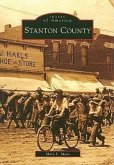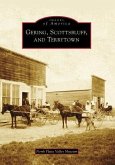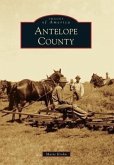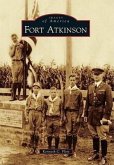Over 150 years ago, the area now known as Chadron was vast, open grassland. Nearby water sources, Chartran Creek and Bordeaux Creek, were named for the French fur traders whose main customers were nomadic tribes the French called the Sioux. When gold was discovered in the Black Hills, the area quickly changed. The military outposts Fort Robinson and Camp Sheridan were established to control Indian Agencies for Red Cloud's and Spotted Tail's bands. Cattle replaced buffalo on the rich grasslands. The railroad pushed its way west, and the rest, as they say, is history.
Hinweis: Dieser Artikel kann nur an eine deutsche Lieferadresse ausgeliefert werden.
Hinweis: Dieser Artikel kann nur an eine deutsche Lieferadresse ausgeliefert werden.








